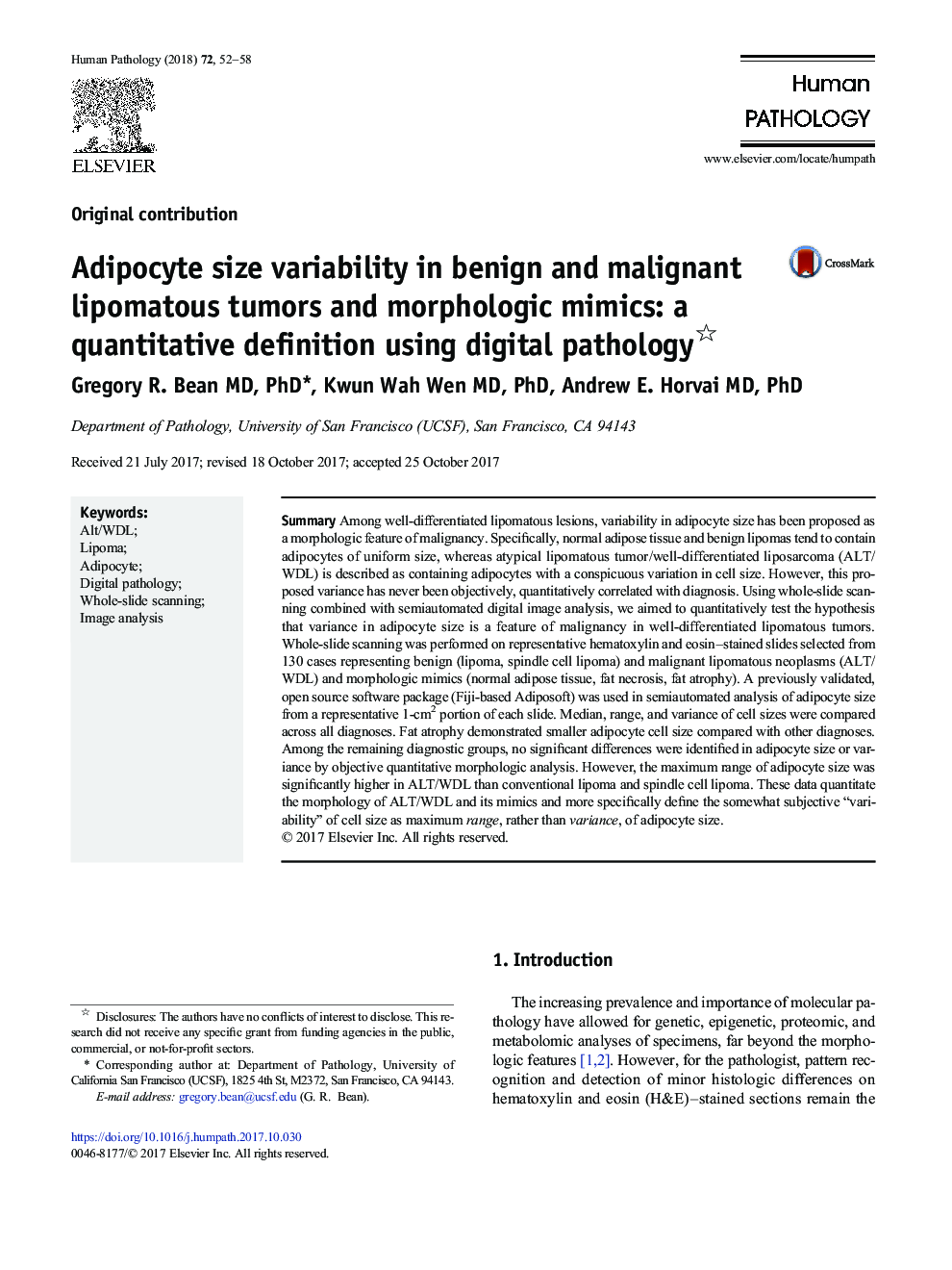| Article ID | Journal | Published Year | Pages | File Type |
|---|---|---|---|---|
| 8807639 | Human Pathology | 2018 | 7 Pages |
Abstract
Among well-differentiated lipomatous lesions, variability in adipocyte size has been proposed as a morphologic feature of malignancy. Specifically, normal adipose tissue and benign lipomas tend to contain adipocytes of uniform size, whereas atypical lipomatous tumor/well-differentiated liposarcoma (ALT/WDL) is described as containing adipocytes with a conspicuous variation in cell size. However, this proposed variance has never been objectively, quantitatively correlated with diagnosis. Using whole-slide scanning combined with semiautomated digital image analysis, we aimed to quantitatively test the hypothesis that variance in adipocyte size is a feature of malignancy in well-differentiated lipomatous tumors. Whole-slide scanning was performed on representative hematoxylin and eosin-stained slides selected from 130 cases representing benign (lipoma, spindle cell lipoma) and malignant lipomatous neoplasms (ALT/WDL) and morphologic mimics (normal adipose tissue, fat necrosis, fat atrophy). A previously validated, open source software package (Fiji-based Adiposoft) was used in semiautomated analysis of adipocyte size from a representative 1-cm2 portion of each slide. Median, range, and variance of cell sizes were compared across all diagnoses. Fat atrophy demonstrated smaller adipocyte cell size compared with other diagnoses. Among the remaining diagnostic groups, no significant differences were identified in adipocyte size or variance by objective quantitative morphologic analysis. However, the maximum range of adipocyte size was significantly higher in ALT/WDL than conventional lipoma and spindle cell lipoma. These data quantitate the morphology of ALT/WDL and its mimics and more specifically define the somewhat subjective “variability” of cell size as maximum range, rather than variance, of adipocyte size.
Related Topics
Health Sciences
Medicine and Dentistry
Pathology and Medical Technology
Authors
Gregory R. MD, PhD, Kwun Wah MD, PhD, Andrew E. MD, PhD,
